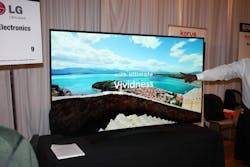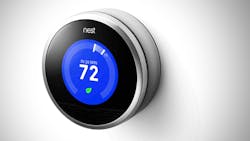At CES Unveiled NY, the pre-show to the January Consumer Electronics Show, Ultra HD was the shining star. The first half of the day included panels with titles like: “Ultra HD: An Evolution or Revolution?” and “Native Ultra HD Content: Where’s The Beef?” Panelists discussed everything from production to retail. The Ultra HD conference was followed by a trend analysis of the consumer-electronics industry, announcements of the Best of Innovations Awards honorees, and—of course—a preview of what will be at this year’s CES. Here are the top five things we learned:
1. Display will always be the number-one 1 priority for consumers.
In researching Ultra HD, the Consumer Electronics Association (CEA) found that when purchasing televisions and other screen devices, display quality is the most important factor for consumers (closely followed by price). Tim Alessi, Director of New Product Development at LG, reiterated this fact. The CEA also discovered that in terms of content, movies and TV shows are most important to consumers for best-quality viewing. Marc Finer, Technical Director of the Digital Entertainment Group, discussed how digital cinema has been the delivery point for at-home trends—being the first medium to truly adopt HD and now Ultra HD. As consumers see these new standards put in place outside the home, the demand for the technology in their living room increases. A main attraction of the event was LG’s Ultra HD Curved organic-light-emitting-diode (OLED) 77-in. TV—an impressive set with state-of-the-art resolution and contrast (pictured below).
2. Ultra HD will follow a similar path as HD; it won’t be overhyped like 3D display technology.
Throughout the day, it was noted that Ultra HD is set to follow the same path as HD—in part due to upscaling. With typical 3D technology, such as cumbersome glasses or unimpressive functionality, much of the buzz was overhyped. Although 3D is a feature in most television sets, it isn’t a big selling point. Because Ultra HD is the natural progression from HD and can be easily integrated into a current setup, however, the problems lessen. Shawn DuBravac, Chief Economist and Senior Director of Research at CEA, said it best when he stated, “If the biggest ‘bad factor’ of Ultra HD is cost, it’s on the right path.” As with any new technology, prices are sure to decrease over time. In discussing consumer choices and trends and why they will choose Ultra HD, Scott Ramirez, Vice President of Product Marketing and Development at Toshiba, noted, “Nobody said they didn’t want to switch from VHS to DVD.”
3. Connectivity is continuously driving tech growth and spectrum problems must be dealt with efficiently.
The Nest smart thermostat learns and adapts to a user's habits and helps conserve energy.
DuBravac also discussed how we are now in an “Age of Autonomy,” where more and more connected devices—from smart TVs to smart thermostats—are changing the way our lives are monitored and controlled. There’s a radio for every range, which is causing significant bandwidth challenges. Hans Baumgartner, Director of Product Management at Rovi, touched on this by saying, “Spectrum problems will only be fixed if broadcast and the like are moved to the most optimal, new technologies.” The utilization of TV white spaces and WiFi technologies will play a critical role. With that comes a stronger dependence on satellites, with Eutelsat and Japan’s MITI working on deploying next-generation satellite technology to deliver the necessary broadband speeds.
4. The third Industrial Revolution is here.
In his trend-analysis presentation, CEA’s DuBravac talked of a third Industrial Revolution: mass customization. As companies move past the Model-T system of production and onto a more customer-centric approach, the tech industry is feeling the pressure. Although customization is made easier with the advent of 3D printing of select parts and online retailing (take, for instance, Motorola’s site allowing customers to design their own Moto X), there are still challenges. With the wide range of capabilities of tablets and smart TVs, consumers are increasingly banking on their devices being intuitive and knowing what they want. This goes back to Ultra HD, which, with its high resolution, provides an almost “real life” experience. Jay Vandenbree, Senior Vice President of Home Entertainment at LG, said it could help “Grandma see her grandchildren for the first time and really see them” via Skype on a smart TV. Devices are increasingly providing a better overall experience that feels special to a single person.
5. Smart-home devices are having their moment.
On the showroom floor, connected-home devices seemed to be a major player. Alarm.com’s Connected Home platform uses a cloud-based system and a wide range of devices and sensors to provide interactive security, video monitoring, energy management, and home automation. Everything from thermostats to door locks, garage doors, and solar panels can be controlled through a connected mobile device and Alarm.com’s network of authorized dealers. Canary, meanwhile, takes a different approach with an “all-in-one device” that combines an HD video camera and a variety of safety sensors to track everything from motion to temperature, air quality, and activity. It too can be controlled from a smartphone; sending alerts if it senses something out of the ordinary (such as sudden temperature changes that could indicate a fire).
The 2014 International CES will be held in Las Vegas from January 7-10. Information about the show can be found here.



